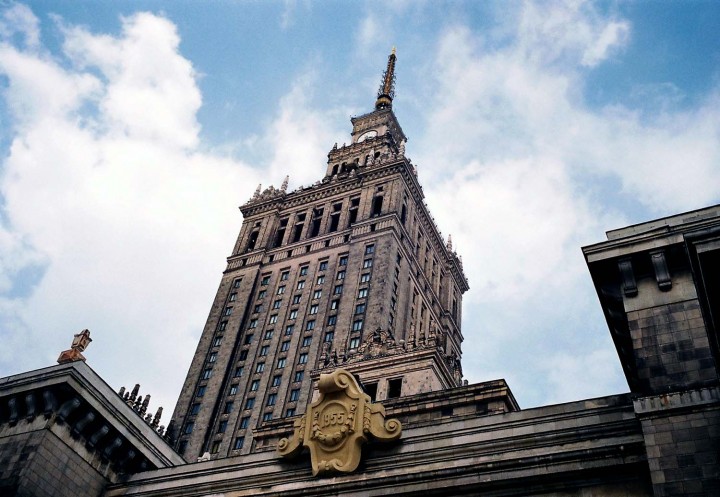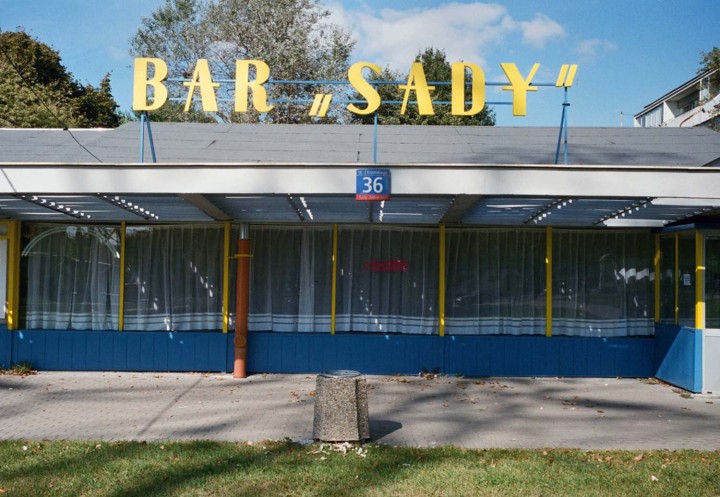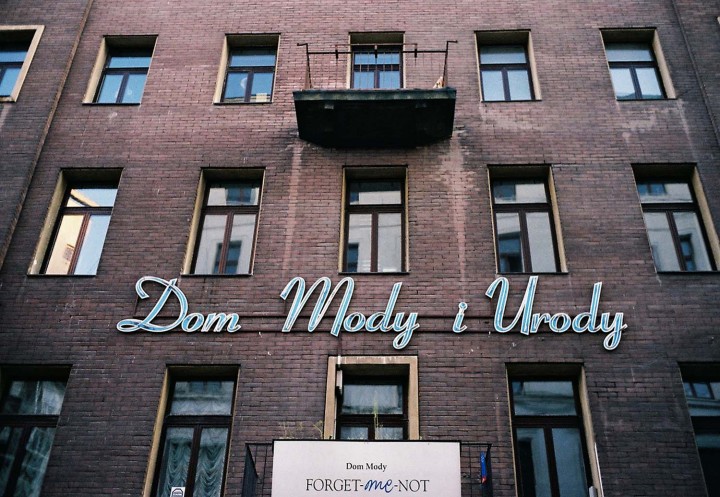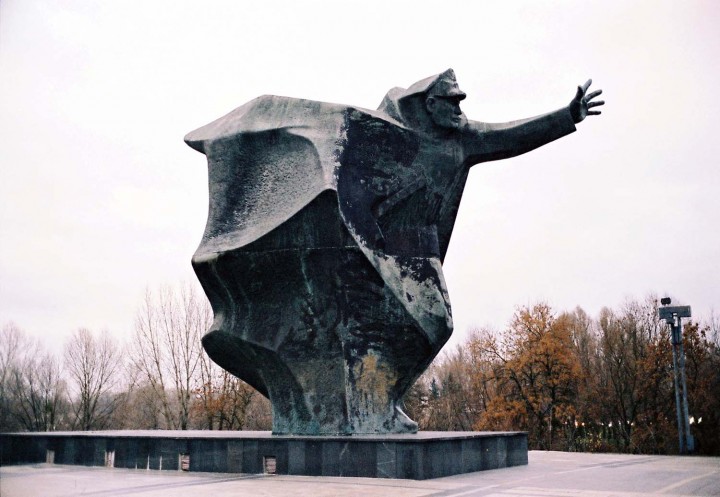Krszysztof Kieślowski captured the labyrinthine passages underneath Warsaw’s city center in his television feature Pedestrian Subway. It was 1973.
The main character, a teacher arriving from the countryside, notices an estranged wife through the window of an underground flower shop where she now works. This sense of alienation dwells in the station; for as long as I can remember, exiting the train at Warsaw Central and rushing into the unfinished underground maze has felt like a desperate search for a familiar face in the crowd.
Walking out onto the street, a golden, Central-European autumn greets me as the leaves twist in the Royal Park Łazienki, right down the hill from the Center for Contemporary Art Ujazdowski Castle. The castle was rebuilt in 1974, two decades after the city was entirely destroyed during World War II. As a curator in residence at the museum a few years ago, the colorful trees fascinated me with their contrast to the brutal grayness of Poland’s socialist realist architecture.
My first night in town, I bump into Piotr Łakomy on the steps of Zachęta National Gallery. He is a finalist for the Deutsche Bank Art Prize, the main distinction for young Polish artists. As we discuss the efficiency of his sculptural installation in the shape of a dismantled body, I realize that he might be one of the few artists from Poznań, in Poland’s western region, who have yet to move to Warsaw. We talk about coldness, and how this term is associated with art, music and ultimately Eastern Europe. In the caves of the Academy of Fine Arts, we’re drinking Zubrówka vodka mixed with apple juice, and we’re spinning with our hands up to West Coast tunes played by Michał Woliński, the founder of the “talking-pictures” magazine Piktogram and the eponymous gallery located in an industrial zone in Praga, on the other side of the river Vistula. This reminds me of summer camp in the 1990s in the stunning lake region of Mazury, when my fellow campers would black out the main reception room of a large house situated in the middle of the countryside and dance to Polish metal music all day instead of going swimming.
As I cross my doorstep in the early morning, my grandpa walks out of his room and tenderly proposes black tea. We sit at the table and watch the first news of the day: the Prime minister announces that Poland may now accept two thousand Syrian refugees from the recent crisis, but only Christians.
The next morning, bus #122 takes me from the grandparents’ home, an elegant 1960s building situated in Żoliborz, among the eldest orchards of the city. We stroll along Muranów, which once served as the heart of the Warsaw Ghetto, from which both my grandmas have miraculously escaped. We dive into Nowy Świat, the prominent street of the New World, anchored by the historical Hotel Bristol, and the Holy Cross Church where Chopin’s heart remains sheltered and conserved. To my left emerges the University of Warsaw, from which my dad was expelled in 1968, before he lost his citizenship and moved to Paris as a political refugee. What’s the difference between a Syrian migrant today and my stateless father then?
The curator of the iconic Foksal Gallery is waiting at Café Blikle, an old-school bakery that has been serving the same rose-flavored donuts for decades. At the gallery she gives a tour of the remarkable exhibition of sketchbooks, drafts and notes by Tadeusz Kantor, the major figure of postwar Polish theater. Later that afternoon, I spend some time at the Avant-Garde Institute, also known as the studio of Edward Krasiński, the avant-garde conceptualist renowned for having used blue tape in his happenings and performances throughout the 1960s and 1970s — a gesture that came to be defined as the “blue line.” I walk toward the Museum of Modern Art, located in a former furniture store that interestingly faces the impressive Palace of Culture and Science, Warsaw’s 1955 hallmark and an unforgettable present from Stalin to the Poles. Marta Kołakowska, the founder of Leto Gallery, meets me at the Museum cafe. The real estate boom in the neighborhood of Praga, where her gallery has been located for the past few years, is forcing her to change location. “Just like in Brooklyn, East London and Paris?” I ask. “Well,” she smiles, “it’s nothing other than neo-liberal Warsaw. Blow up my town.”
The tramway rides along the modernist buildings and old neon signs surrounding Hala Mirowska and Krochmalna Street, made famous by Isaac Bashevis Singer in his fantastic tales and novels depicting the pre-war Jewish Warsaw and that have embellished my childhood imagination with their colorful heroines — Shosha, Yentl, Hadassah. They’re a dreamlike remembrance of a city that no longer exists and yet reinvents itself constantly in a whisper of modernity.








